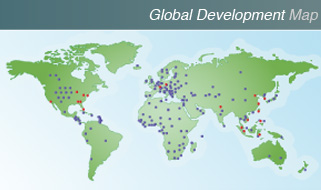-
"R&D Changes Foreseen After Supreme Court Obamacare Decision"
GEN’s “Insight & Intelligence” quotes Neuralstem’s President and CEO Richard Garr in column that focuses on the Affordable Care Act’s impact on drug development, and states that “innovative drugs that offer clear superiority over existing products likely among beneficiaries of overhaul.”

-
Innovative Business: Neuralstem
Neuralstem is highlighted in “Innovative Businesses” special section.
-
"Brain injuries must inspire research push"
Lee Nystrom, chairman of the board, emeritus, of the NFL Alumni Association, spotlights Neuralstem in his op-ed call to the NFL to prevent and fund research to find cures for Chronic Traumatic Encephalopathy (CTE). Nystrom cites the tragic suicides of football greats such as Ray Easterling, Dave Duerson and Junior Seau who have been tied by many to traumatic injuries to the brain.
-
"Give hope to those with ALS"
I have a lot to live for: a beautiful family, friends and a life I love. Until a few short years ago, I also had hope.
All that changed in an instant. My future, my career, my hope of watching my three children grow up, attending their graduations, walking my daughters down the aisle, holding my grandchildren and growing old with my wife — all of that disappeared with two short sentences: “I’m sorry, you have ALS. There is no cure.”
{showhide}
In 2010, I was diagnosed with ALS, or Lou Gehrig’s disease. I was 38. My left leg fatigued easily. I was short of breath, my energy tapped. I needed a cane to walk. Then came the barrage of tests, the results the same: There is no hope. You are without hope.
Then I heard about a clinical trial transplanting neural stem cells into the spinal cords of ALS patients. It was the first of its kind. The Food and Drug Administration approved it and I qualified. I was treated at Emory University Hospital in March 2011.
Since then, the deterioration from ALS has temporarily slowed. I even completed a 2 1/2-mile walk to defeat ALS. What a change. This is real progress. I have hope again. But it’s not enough. We need to have hope for everyone.
I am doing everything I can to focus research on a cure for ALS and other diseases. I have become a speaker, finding a new voice as my leg strength returned. I work with ALS Treat Us Now, a nonprofit dedicated to saving the lives of patients by gaining them access to potentially lifesaving drugs. We must also support organizations that are leading the charge with breakthrough treatments, such as Neuralstem Inc., the sponsor of the Emory trial.
And that’s not enough.
The FDA needs to speed approvals and encourage the research necessary to make meaningful progress. Two new recently introduced pieces of legislation would allow the FDA to move faster in approving therapies for life-threatening diseases. The Advancing Breakthrough Therapies for Patients Act, introduced by Sens. Michael Bennet (D-Colo.), Orrin Hatch (R-Utah) and Richard Burr (R-N.C.), and the Transforming the Regulatory Environment to Accelerate Access to Treatments (TREAT) Act, introduced by Sen. Kay Hagan (D-N.C.), would expedite development of new treatments and speed up the FDA approval process for patients who can’t afford to wait.
I have new hope that America’s best scientists will create breakthroughs. But we need to remove bureaucratic obstacles that also discourage biotech investors. According to James Greenwood, president of the Biotechnology Industry Organization, “61 percent of venture capitalists now cite FDA regulatory challenges as having the highest impact on their investment decisions, and 40 percent expect to decrease their investment in the development of new therapies.”
Hope is something that is meant to be shared. Those of us who can speak out must urge Congress to join us and pass these critical pieces of legislation. Hope is out there. We just need to make it real.
Ted Harada, a former manager for FedEx and DHL, is on the board of directors of the Georgia ALS Association. He lives in McDonough.
{/showhide}
-
"Stem Cell Injections in Lou Gehrig’s Disease can be Given Safely, New Research Shows; U-M ALS expert leads trial at Emory University"
ANN ARBOR, Mich., April 10, 2012 /PRNewswire-USNewswire/ -- The first published results from an early-stage clinical trial show that spinal cord stem cells can be delivered safely into the spines of patients with the condition commonly known as Lou Gehrig's disease, opening the door for further research on this innovative approach.
In a paper published online ahead of print publication in the peer-reviewed journal Stem Cells, a team from the University of Michigan, Emory University and study sponsor NeuralStem, Inc. report the results from 12 patients who took part in a study being conducted at Emory.
More Articles...
Select media coverage in this website is provided for the information and convenience of the public, and is not intended to be all-encompassing nor an endorsement of the specific stories or media outlets.







